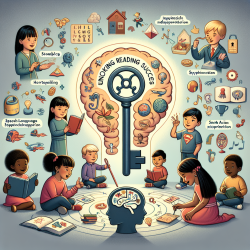Introduction
In the quest to enhance language and reading comprehension in young children, a groundbreaking study titled Ten Steps to Conducting a Large, Multi-Site, Longitudinal Investigation of Language and Reading in Young Children has shed light on effective strategies. This research, conducted by the Language and Reading Research Consortium (LARRC), provides a comprehensive framework for conducting large-scale, multi-site longitudinal studies, offering valuable insights for practitioners in speech-language pathology and education.
The Importance of Data-Driven Decisions
Data-driven decisions are crucial in educational interventions. The LARRC study emphasizes the importance of using empirical evidence to guide interventions aimed at improving reading comprehension. By examining the role of language skills in reading development, the study offers a robust foundation for practitioners to enhance their strategies.
Key Findings and Implementation Steps
The study outlines ten essential steps for conducting successful longitudinal research, which can be adapted by practitioners to improve language and reading outcomes in children:
- Build a Collaborative Team: Assemble a diverse team of experts to ensure a comprehensive approach to research and intervention.
- Develop a Theoretical Framework: Ground your research in established theories of reading and language development to guide your questions and methodologies.
- Design a Comprehensive Study: Ensure your study design aligns with your research aims and allows for a thorough examination of language skills.
- Determine the Sample and Recruitment Plan: Strategically recruit participants to ensure a representative sample that can provide meaningful insights.
- Select and Develop Measures: Choose reliable and valid measures to assess language and reading skills comprehensively.
- Train Assessors and Develop Data Collection Procedures: Standardize training and data collection to maintain consistency and accuracy across sites.
- Commence Data Collection: Implement data collection with precision and flexibility to accommodate the needs of participants and researchers.
- Develop a Plan for Data Scoring: Ensure accurate scoring and data management to maintain the integrity of your findings.
- Implement a Strong Data Management Plan: Use technology to streamline data collection and processing, reducing errors and enhancing efficiency.
- Prepare for Communication and Flexibility: Foster open communication and adaptability to address challenges and refine methodologies as needed.
Encouraging Further Research
For practitioners interested in furthering their research or improving their practice, the LARRC study serves as a valuable resource. By adopting these steps, practitioners can contribute to the growing body of knowledge on language and reading development, ultimately leading to better outcomes for children.
Conclusion
The LARRC study underscores the importance of a methodical, data-driven approach to understanding and enhancing language and reading skills in young children. By implementing the outlined steps, practitioners can refine their strategies and contribute to the advancement of educational research.
To read the original research paper, please follow this link: Ten Steps to Conducting a Large, Multi-Site, Longitudinal Investigation of Language and Reading in Young Children.










